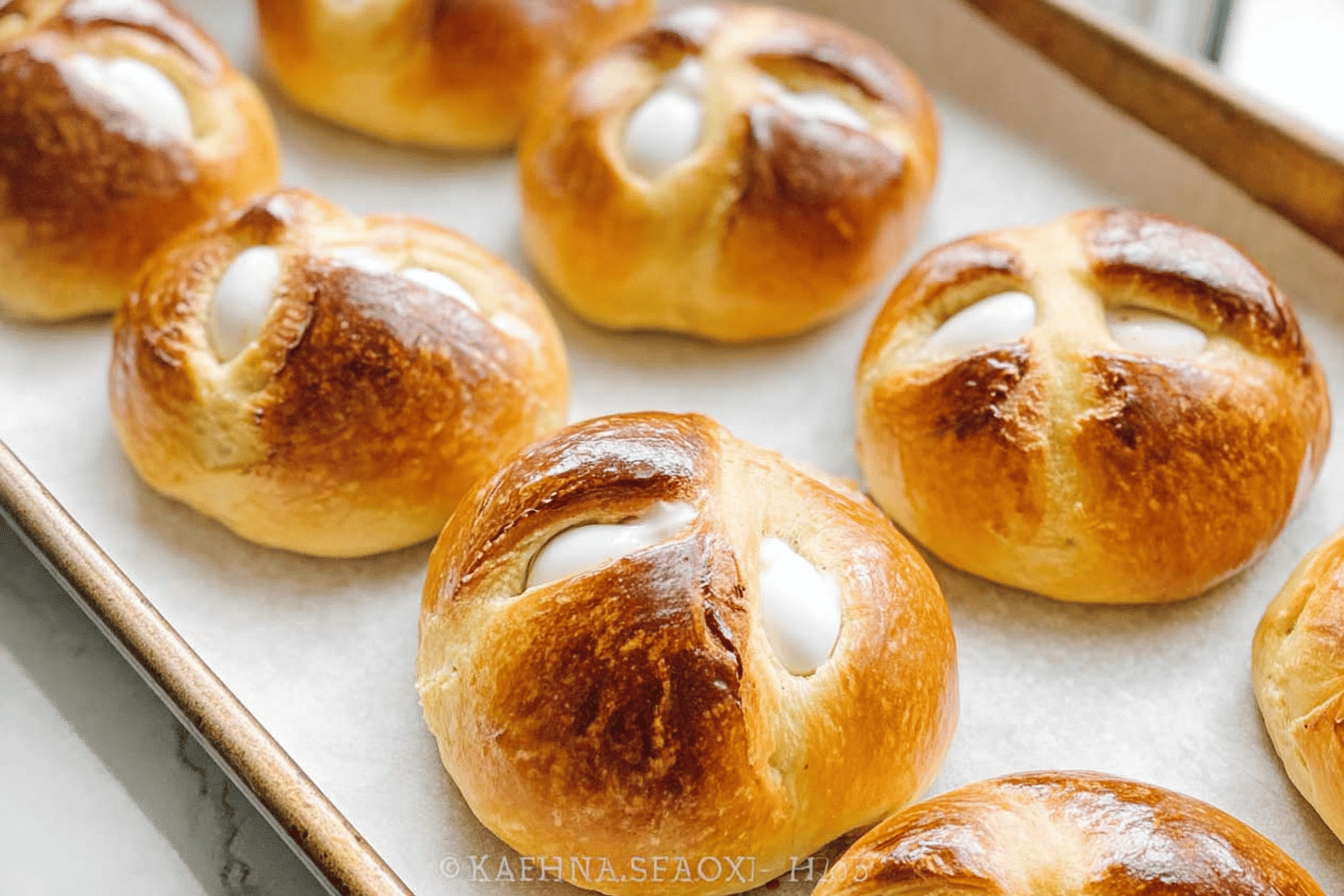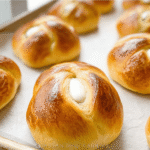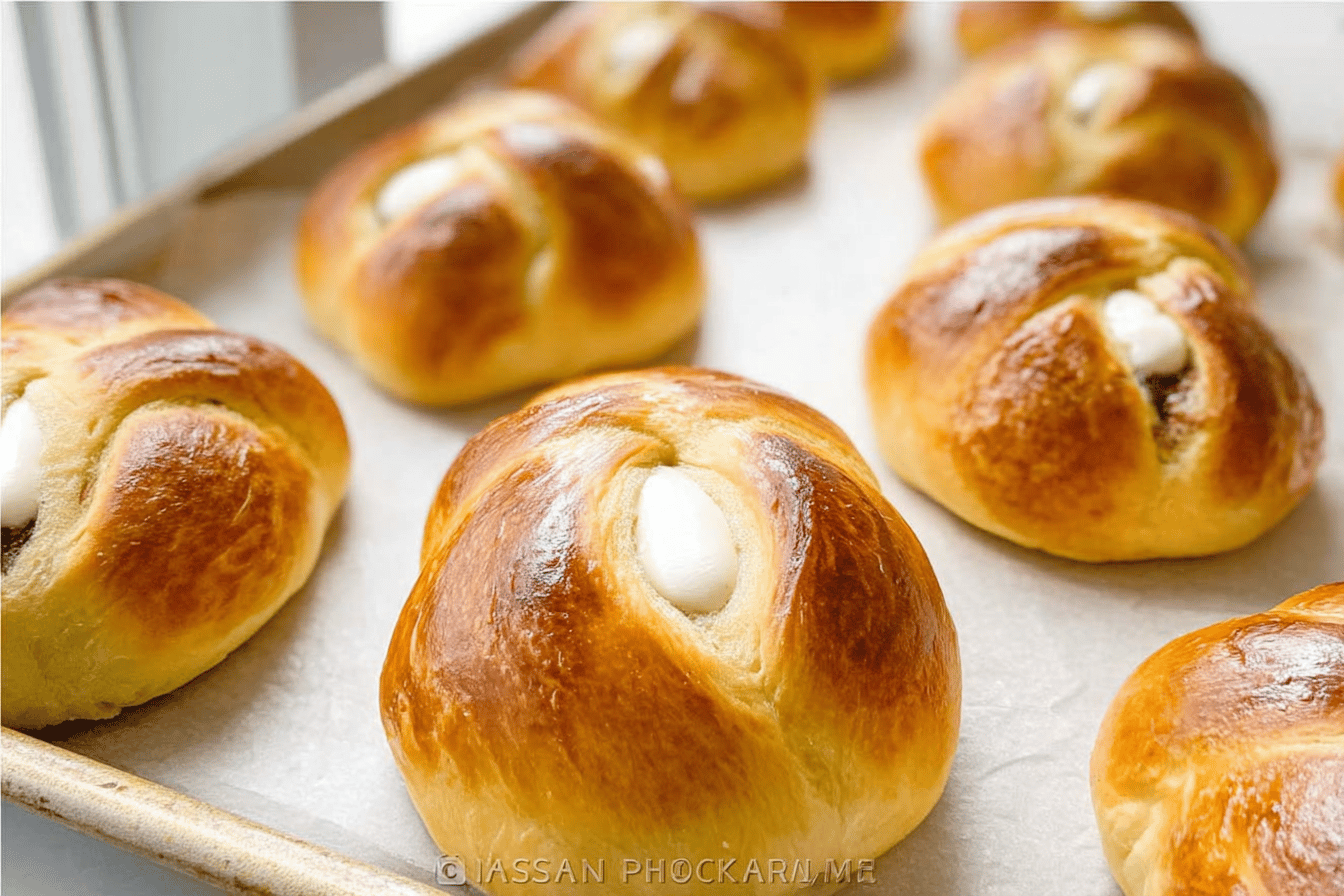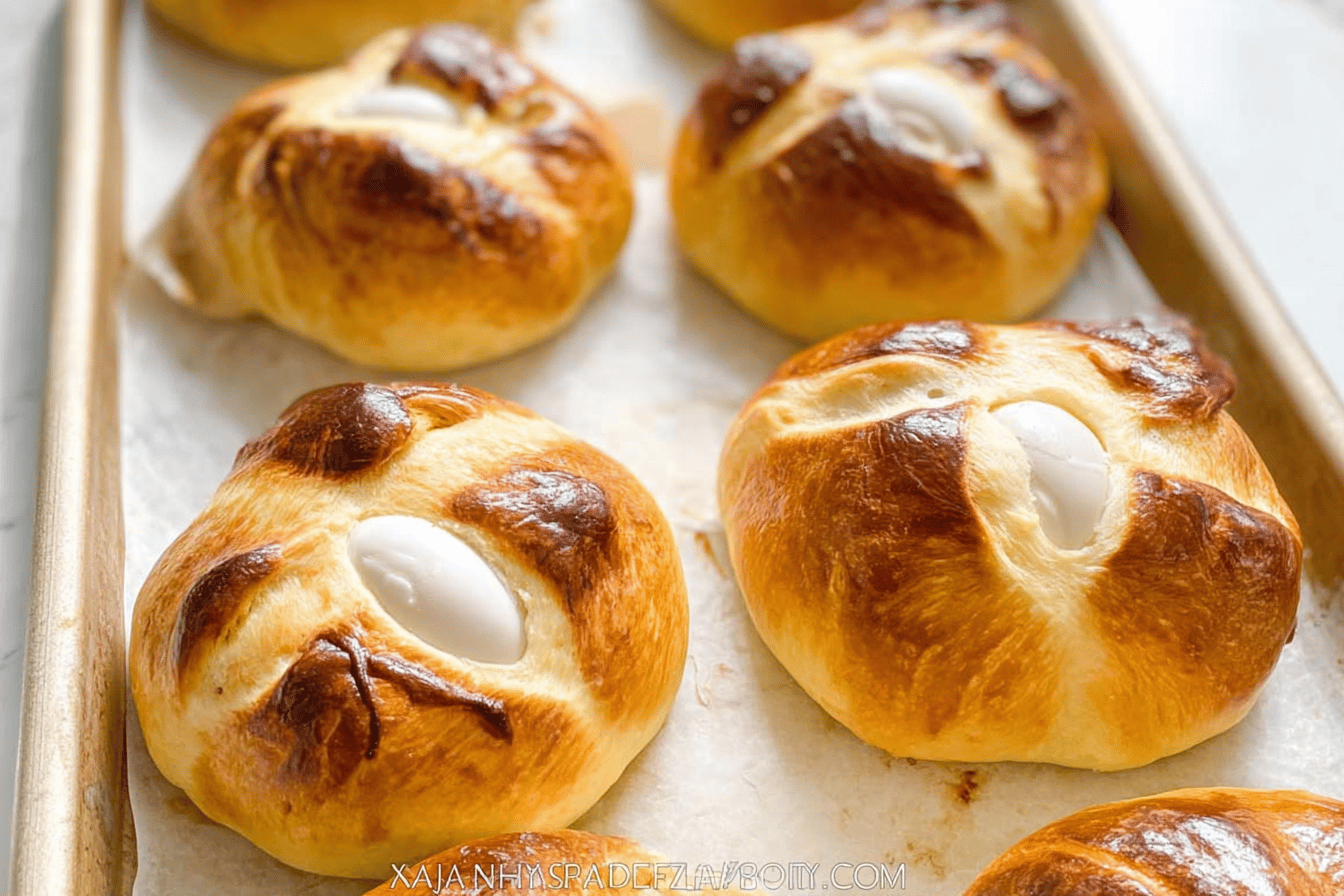Why You’ll Love This Easter Breads Recipe
As someone who grew up with the warm aromas of freshly baked bread filling our home, I know how special a loaf like this can make holidays feel. This Easter breads recipe brings together simple steps and everyday ingredients to create something truly magical for your festive table. It’s not just about the taste; it’s the ease and joy it adds to your day, making it a favorite for home cooks, busy parents, and baking enthusiasts alike.
One reason you’ll adore this Easter breads recipe is its straightforward preparation, perfect for fitting into tight schedules without sacrificing that homemade touch. Using basic pantry staples, you can whip up delicious sweet bread that bursts with holiday flavor, like a blend of citrus and warmth that evokes family memories. Plus, it’s adaptable for various needs, ensuring everyone at your table can enjoy a slice, whether they’re watching their diet or exploring new tastes.
Another draw is how this recipe supports a balanced lifestyle, incorporating wholesome elements that provide fiber and essential nutrients while still delivering that comforting sweetness. Imagine sharing this holiday bread with loved ones, creating moments that turn ordinary gatherings into cherished traditions. For more ideas on easy baking, check out our sweet pecan bread variation that pairs wonderfully with Easter themes.
Jump To
- 1. Why You’ll Love This Easter Breads Recipe
- 2. Essential Ingredients for Easter Breads Recipe
- 3. How to Prepare the Perfect Easter Breads Recipe: Step-by-Step Guide
- 4. Dietary Substitutions to Customize Your Easter Breads Recipe
- 5. Mastering Easter Breads Recipe: Advanced Tips and Variations
- 6. How to Store Easter Breads Recipe: Best Practices
- 7. FAQs: Frequently Asked Questions About Easter Breads Recipe
- 8. Easter Breads Recipe
Essential Ingredients for Easter Breads Recipe
Gathering the right ingredients is the first step to baking a perfect Easter breads recipe. Below is a complete list of everything you’ll need, ensuring your dough turns out soft, flavorful, and ready for braiding. This list covers all the essentials based on time-tested family methods, making it easy to follow along.
- 1 package active dry yeast
- 1 tablespoon sugar (for activating yeast)
- ½ cup warm milk (for activating yeast)
- ½ cup neutral oil (such as avocado oil)
- 3 eggs at room temperature
- ¾ cup sugar
- 1 tablespoon lemon zest
- 1 teaspoon vanilla extract or vanilla bean paste
- 1 cup warm milk
- ½ cup unsalted butter, melted
- 6 cups all-purpose flour (more if needed)
- 1 tablespoon melted butter for greasing dough
- 1 egg (for egg wash)
- 1 tablespoon milk (for egg wash)
- 2 tablespoons sesame seeds (optional for topping)
These ingredients come together to make two beautiful loaves, with options to adjust for dietary preferences. Remember, fresh ingredients like warm milk and yeast are key to that light, airy texture we all love in sweet Easter bread recipes.
How to Prepare the Perfect Easter Breads Recipe: Step-by-Step Guide
Baking this Easter breads recipe is a rewarding process that starts with activating the yeast and ends with a golden, braided loaf ready for your holiday table. Follow these steps to ensure success, drawing from my own family traditions that make it feel personal and fun. We’ll cover everything from mixing to baking, with tips to keep it simple for beginners.
- Combine 1 package active dry yeast, 1 tablespoon sugar, and ½ cup warm milk in a bowl. Whisk and allow to rest for 5 to 10 minutes until foamy. If no foam forms, the yeast is inactive, so start over with fresh yeast.
- Add to the activated yeast mixture: ½ cup neutral oil, 3 eggs at room temperature, ¾ cup sugar, 1 tablespoon lemon zest, 1 teaspoon vanilla extract or vanilla bean paste, 1 cup warm milk, and ½ cup unsalted butter, melted. Whisk everything together until well blended.
- Using a stand mixer with a dough hook on medium-low speed, gradually add 6 cups all-purpose flour until the dough pulls away from the sides, then knead for 6 to 8 minutes. If you don’t have a mixer, knead by hand until smooth and tacky.
- Shape the dough into a ball, grease it lightly with 1 tablespoon melted butter, cover loosely, and let it rise in a warm, draft-free place for about 2 hours or until it triples in size.
- Punch down the dough, divide it into two equal halves, and then each half into three equal pieces, making six pieces total. Shape each into a ball, then roll them into ropes about 14-15 inches long.
- Pinch the tops of three ropes together, braid them, and pinch the bottoms to seal. Repeat for the second loaf and place the braided loaves on parchment-lined baking sheets.
- Cover the loaves and let them rise for 1 hour. After 45 minutes, preheat the oven to 350°F (175°C).
- Prepare the egg wash by mixing 1 egg with 1 tablespoon milk; brush it over the loaves and sprinkle with 2 tablespoons sesame seeds if desired.
- Bake the loaves for 30 to 40 minutes until golden brown and the internal temperature reaches 190°F (88°C). If the tops brown too quickly, cover with foil.
- Cool the loaves completely on racks before serving. For a festive touch, decorate with mini eggs or powdered sugar.
This process takes about 15 minutes for prep, 30 minutes to cook, and 3 hours total for rising, making the overall time approximately 2 hours 45 minutes. With these steps, you’ll create loaves that bring back those cozy Easter memories I cherish from my childhood.
Dietary Substitutions to Customize Your Easter Breads Recipe
Making this Easter breads recipe work for everyone means thinking about swaps that keep the flavor and texture intact. Whether you’re baking for vegan friends or those with gluten sensitivities, small changes can make a big difference. Let’s look at how to adapt this sweet bread to various needs, drawing from my experiences in the kitchen.
| Substitution Type | Original Ingredient | Alternative |
|---|---|---|
| For Eggs | 3 eggs | Flaxseed or chia seed gels for vegan versions |
| For Milk | 1 ½ cups warm milk total | Almond or oat milk for dairy-free options |
| For Flour | 6 cups all-purpose flour | Gluten-free flour blend for those avoiding gluten |
These adjustments help maintain the bread’s moisture and structure, so you can enjoy your holiday bread without worry. For instance, if you’re reducing calories, try swapping sugar with natural sweeteners while keeping the lemon zest for that bright flavor.
Mastering Easter Breads Recipe: Advanced Tips and Variations
Once you’re comfortable with the basics, take your Easter breads recipe to the next level with these expert tips. From perfecting the dough to adding creative twists, these ideas come from years of baking in my kitchen. Remember, practice makes perfect, just like sharing stories from my Bulgarian heritage.
- Proof yeast carefully; no foam means the yeast is inactive, so use fresh or instant alternatives to avoid disappointment.
- Warm milk and butter should be lukewarm for proper yeast activation, helping your dough rise beautifully.
- Rise dough in a warm, draft-free spot, such as inside a turned-off oven, for the best results.
- If no mixer is available, knead by hand until smooth and tacky to build that perfect texture.
- Ingredients can be halved for a single loaf; adjust eggs and flour slightly to keep the texture just right.
- Dough may be refrigerated overnight after the first rise; let it warm up before shaping for easier handling.
- Baked bread freezes well if wrapped tightly, so make extras for later.
- Decorative toppings may include sesame seeds, dyed boiled eggs, mini chocolate eggs, or powdered sugar for a festive look.
- Cover loaves with foil if browning too quickly to ensure even baking.
- Braids can be shaped into rings or mini loaves, offering fun variations for your Easter table.
For more creative baking ideas, visit our breakfast bake recipe that complements this bread with fruity flavors.
As my grandma always said, ‘The secret to great bread is a little patience and a lot of love’ that’s what makes this Easter breads recipe so special.
How to Store Easter Breads Recipe: Best Practices
Keeping your freshly baked Easter breads recipe fresh is easy with the right techniques. After all the effort you put in, you’ll want to preserve that soft, sweet interior for as long as possible. Here are straightforward ways to store and enjoy your loaves later.
Store your Easter bread in an airtight container or wrapped tightly in plastic wrap to maintain freshness for up to 3-4 days. For longer storage, wrap the bread tightly in plastic wrap and place it in a freezer-safe bag to freeze for up to 2 months. When reheating, warm the bread in a preheated oven at 325°F (160°C) for 10-15 minutes to restore its texture without making it soggy.

FAQs: Frequently Asked Questions About Easter Breads Recipe
How do I know if my yeast is active for Easter bread dough?
To check if your yeast is active, dissolve it in warm (lukewarm, about 100–110°F) milk or water with a bit of sugar. After 5–10 minutes, the mixture should become frothy and bubbly. If it doesn’t foam, your yeast may be expired or the liquid too hot or cold, which can kill the yeast. Always use fresh yeast and ensure the liquid temperature is just warm to the touch before mixing.
What’s the best method to get Easter bread dough to rise properly?
For a good rise, cover your dough with a clean, damp kitchen towel and place it in a warm, draft-free spot. Many bakers place the bowl inside a turned-off oven with the oven door closed to create a cozy environment between 75–85°F. Let the dough rise until it doubles in size, usually 1 to 2 hours, depending on room temperature.
Can I freeze Easter bread after baking, and how should I do it?
Yes, Easter bread freezes well. After baking, let the loaf cool completely to room temperature. Wrap it tightly with plastic wrap to prevent freezer burn, then place it inside a freezer-safe Ziplock bag. For best taste, consume within 2 to 3 months. When ready to eat, thaw the bread overnight at room temperature.
How can I prevent the top of my Easter bread from burning during baking?
If your bread is browning too quickly but isn’t fully baked inside, loosely cover the loaf with aluminum foil halfway through the baking time. This shield protects the crust from over-darkening while allowing the bread to finish baking evenly.
Is it possible to make a smaller batch of Easter bread by using fewer eggs?
Yes, you can make one loaf instead of two by reducing the eggs from 3 to 2. Because egg size and moisture vary, add extra flour gradually during kneading until you achieve a soft, slightly tacky dough that’s not sticky. This adjustment helps maintain the right dough consistency for a smaller batch.

Easter Breads Recipe
- Total Time: 3 hours 45 minutes
- Yield: 2 braided loaves
- Diet: Vegetarian
Description
🍞 Sweet Easter Bread Recipes bring festive warmth and tradition to your holiday table with soft, fragrant braided loaves.
🌼 These breads combine rich flavors of lemon and vanilla, perfect for sharing joyous moments with family and friends.
Ingredients
– 1 package active dry yeast
– 1 tablespoon sugar for activating yeast
– ½ cup warm milk for activating yeast
– ½ cup neutral oil (such as avocado oil)
– 3 eggs at room temperature
– ¾ cup sugar
– 1 tablespoon lemon zest
– 1 teaspoon vanilla extract or vanilla bean paste
– 1 cup warm milk
– ½ cup unsalted butter, melted
– 6 cups all-purpose flour (more if needed)
– 1 tablespoon melted butter for greasing dough
– 1 egg for egg wash
– 1 tablespoon milk for egg wash
– 2 tablespoons sesame seeds optional for topping
Instructions
1-Combine 1 package active dry yeast, 1 tablespoon sugar, and ½ cup warm milk in a bowl. Whisk and allow to rest for 5 to 10 minutes until foamy. If no foam forms, the yeast is inactive, so start over with fresh yeast.
2-Add to the activated yeast mixture: ½ cup neutral oil, 3 eggs at room temperature, ¾ cup sugar, 1 tablespoon lemon zest, 1 teaspoon vanilla extract or vanilla bean paste, 1 cup warm milk, and ½ cup unsalted butter, melted. Whisk everything together until well blended.
3-Using a stand mixer with a dough hook on medium-low speed, gradually add 6 cups all-purpose flour until the dough pulls away from the sides, then knead for 6 to 8 minutes. If you don’t have a mixer, knead by hand until smooth and tacky.
4-Shape the dough into a ball, grease it lightly with 1 tablespoon melted butter, cover loosely, and let it rise in a warm, draft-free place for about 2 hours or until it triples in size.
5-Punch down the dough, divide it into two equal halves, and then each half into three equal pieces, making six pieces total. Shape each into a ball, then roll them into ropes about 14-15 inches long.
6-Pinch the tops of three ropes together, braid them, and pinch the bottoms to seal. Repeat for the second loaf and place the braided loaves on parchment-lined baking sheets.
7-Cover the loaves and let them rise for 1 hour. After 45 minutes, preheat the oven to 350°F (175°C).
8-Prepare the egg wash by mixing 1 egg with 1 tablespoon milk; brush it over the loaves and sprinkle with 2 tablespoons sesame seeds if desired.
9-Bake the loaves for 30 to 40 minutes until golden brown and the internal temperature reaches 190°F (88°C). If the tops brown too quickly, cover with foil.
10-Cool the loaves completely on racks before serving. For a festive touch, decorate with mini eggs or powdered sugar.
Notes
🌡️ Proof yeast properly; no foam indicates inactive yeast—use fresh or instant alternatives.
🌾 Ensure milk and butter are lukewarm, not hot, for proper yeast activation.
🕰️ Rise dough in a warm, draft-free environment for best results, like inside an oven turned off.
- Prep Time: 15 minutes
- Rising time: 3 hours
- Cook Time: 30 minutes
- Category: Bread
- Method: Baking
- Cuisine: American
Nutrition
- Serving Size: 1 slice
Keywords: Easter bread, Sweet braided bread, Holiday bread recipes, Festive bread


